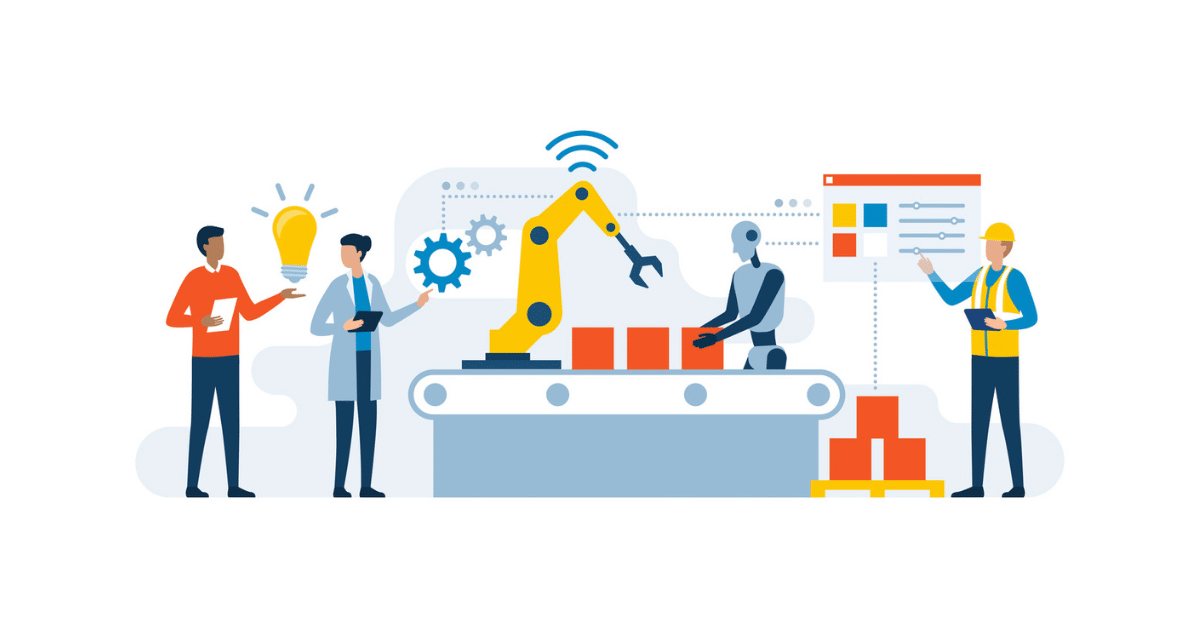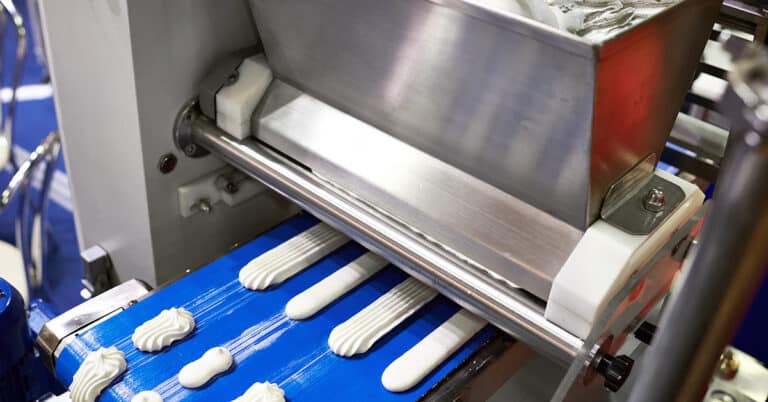In today’s manufacturing landscape, “automation” is taking on a different, more advanced meaning than it traditionally has. Automated processes and robotic assistance have long been a part of manufacturing, introducing unprecedented speed and efficiency to repetitive, handling-oriented tasks. These and other industrial technology advancements continue to grow and expand, and now play a core role in two key concepts necessary to remain competitive in today’s manufacturing landscape — IIoT (Industrial Internet of Things) and Industry 4.0.
IIoT vs. Industry 4.0
IIoT distinguishes manufacturing devices from consumer devices that wirelessly connect to the internal networks and the internet – while Industry 4.0 refers to the importance of lean, efficient operations and the role of sustaining and advancing manufacturing. IIoT and Industry 4.0 are distinct concepts that are all too often used interchangeably, which can affect their efficacy as you seek to introduce them into your operations.
In order ensure you have the right knowledge around these concepts, we’ll breakdown the following:
- The similarities and differences between the two terms
- How they might impact your business and operations
- How automation and robotics continue to evolve from simple pickers and placers to key components of cutting-edge, competitive manufacturing facilities
What are IIoT and Industry 4.0?
Industry 4.0 and IIoT both build on existing concepts that stretch back several years, but have been crafted to account for advances, changes and innovations stemming from those original concepts.
Industrial Internet of Things (IIoT) The term “Internet of Things” dates from the late 1990s. Though at that time, it was an abstract concept. Forward-looking thinkers foresaw that as technology evolved, everyday devices and products that we use would eventually “talk” to each other and to network servers, in the interest of improving their performance. The “Internet of Things” can be seen as connected to “smart” devices — televisions, refrigerators, wristwatches and more. The term “Industrial Internet of Things” distinguishes manufacturing devices from consumer devices, yet the underlying concept is the same. IIoT devices are wirelessly connected to internal networks as well as to the global Internet. These devices represent a new phase in automation – collecting an unprecedented amount of data from all aspects of a process and sharing it with a central server. This data enables analysis and action that has been heretofore unseen, resulting in increased efficiency and productivity.
Industry 4.0
In a general sense, “Industry 4.0” refers to the 4th Industrial Revolution. The advances and innovations enabled by connected devices; massive amounts of computing power; and the modern-day importance of lean, efficient operations. More specifically, the term “Industry 4.0” was coined by the German government to illustrate the scope of the opportunities available from automation, the importance of adopting them, and the role that these technologies play in sustaining and advancing manufacturing. The gravity of the 4th Industrial Revolution is intended to communicate to manufacturers that they must adapt or be left behind. In a simple sense, IIoT is a component of Industry 4.0, but not as an interchangeable term. Without the connectivity and data that IIoT provides, Industry 4.0 would not exist, let alone be as impactful on efficiency. IIoT enables further analysis and action and is a key driver of Industry 4.0.
Industry 4.0 and IIoT together
While IIoT and Industry 4.0 are separate concepts, they should not be viewed that way when introducing greater efficiency into your processes through more automation. As we mentioned earlier, Industry 4.0 would not exist without IIoT, but IIoT would not be very effective without the bigger-picture framework of Industry 4.0. Let’s take a look at specific similarities and differences between the two.
Similarities:
- Efficiency- and results-oriented: Both IIoT and Industry 4.0 are intended to streamline production processes and keep manufacturing viable and profitable.
- Technology-driven: IIoT and Industry 4.0 would not be possible without today’s high-speed, wireless, integrated Internet connectivity.
- People-driven: Automation, implemented in both IIoT and Industry 4.0, can only make existing processes faster and more efficient. It can’t develop new processes or take over by itself. People with the knowledge of how to interpret and implement data and actions provided by this technology are key to its return on investment.
Differences:
- Scope: IIoT will almost always refer exclusively to the equipment in a facility (and any potential off-site server locations). Industry 4.0 comprises IIoT, and places it into a much larger context of analysis, action and long-term sustainability for the manufacturing field.
- Action: In many ways, IIoT is a technology implementation — whether referring to new, connected devices; or retrofitted sensors, data transmitters, wireless equipment, etc. Industry 4.0 is more of a philosophy that is driven by technology like IIoT, but maintains a wider scope and a bigger-picture vision. IIoT may be manifested in equipment investment, but Industry 4.0 is manifested by buy-in among management and leadership.
Despite these differences, IIoT and Industry 4.0 are intended to improve manufacturing processes, and should be pursued and implemented to remain competitive in manufacturing today.
Using IIoT in Industry 4.0 processes
Incorporating IIoT technologies is a core element of Industry 4.0 initiatives, and they manifest in a number of ways. One of the most prevalent is a smart factory strategy, in which sensors and connected equipment communicate with each other and share data that can be used to make improvements on the fly. This is facilitated through the adoption of high-speed 5G networks that allow more information to be shared faster than ever before and cybersecurity that keeps connections safe. Augmented reality or virtual reality systems make it possible for technicians to see detailed information about equipment as they work on it in a heads-up display, so they never have to take their eyes off their work. Advanced artificial intelligence software uses machine learning to automatically make adjustments in workflows based on past and projected trends to reduce downtime and reduce bottlenecks. These are just a few of the ways in which IIoT is fueling innovation and changing the way many facilities operate.
IIoT and manufacturing 4.0 with ATS
Implementing and maintaining new technology can detract from the time you have to focus on your core processes. Fortunately, a maintenance partner like ATS can take over these improvement tasks for you, offering expertise and decades of aggregate experience in these fields, allowing you to continue doing what you do best. Whether you are in search of short-term implementation, maintenance services, or are interested in a fully integrated, comprehensive solution, we can help. Contact us for more information.






